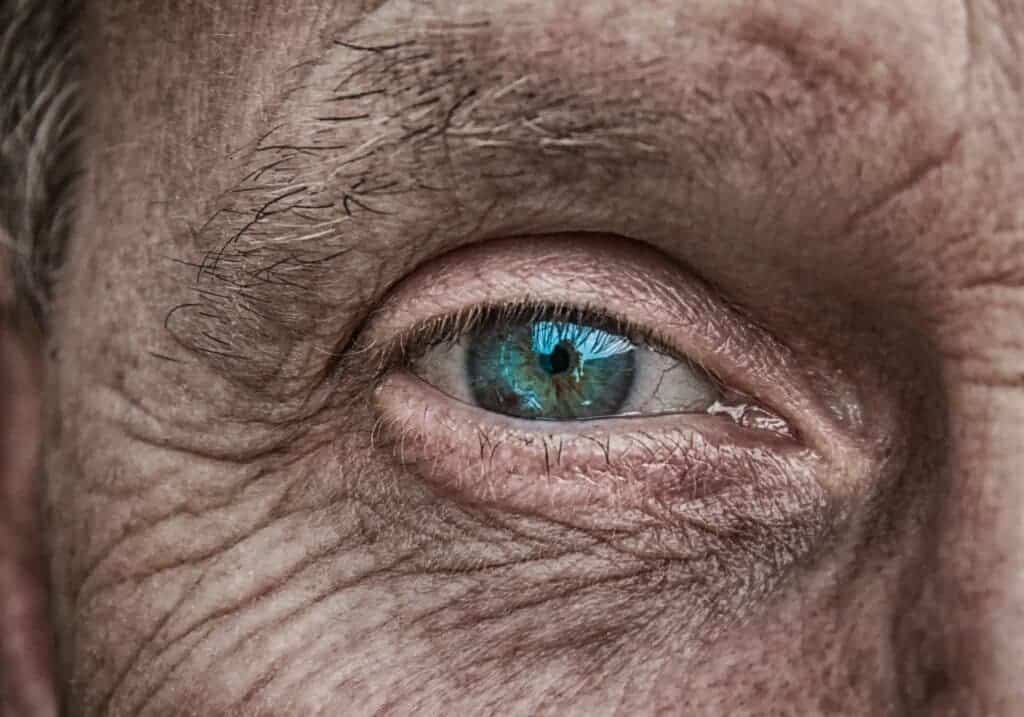
Researchers at University College London studied the effects of shining deep red light onto the eye, a form of therapy that previous studies hinted could improve declining eyesight. The new research confirms that a 3-minute session of longwave deep red light exposure per week significantly improved color contrast vision and the effects were long-lasting.
Deep red light, which has a wavelength of 670 nanometers, enhances the function of mitochondria, the energy factories found inside every animal and plant cell. When water encounters this wavelength, it absorbs its energy, which raises the frequency of vibration of the water molecules.
Since a type of molecular structure within the mitochondria, known as the ATP synthase pump, is bathed in water, the extra energy allows these pumps to rotate faster and release more energy into the biological cell.
Having more efficient mitochondria may improve a range of biological functions, but researchers at University College London led by Glen Jeffery only studied how deep red light and mitochondria relate to eyesight.
In a pilot study, they recruited 24 volunteers aged 37 to 70, who each were exposed to a weak deep red light pointed at their eyes for only 3 minutes. A few hours later, the participants’ color vision was assessed with a standard test where they had to detect letters on a similar-colored background.
Research suggests that mitochondria make the most ATP — energy-carrying molecules found in the cells of all living things — during the morning. So the scientists carried out the red light exposure both in the morning and the afternoon, with the latter acting as a control group.
Those who received the therapy in the morning (8 am to 9 am) scored 12% to 17% better on the color contrast test compared to their performance before the deep red light stimulation. One week later, their scores were still 10% better, suggesting the therapy provides long-lasting benefits. Those who received the red light therapy in the afternoon saw no significant change in their eyesight performance.
“We demonstrate that one single exposure to long wave deep red light in the morning can significantly improve declining vision, which is a major health and wellbeing issue, affecting millions of people globally,” Jeffery said.
“This simple intervention applied at the population level would significantly impact quality of life as people age and would likely result in reduced social costs that arise from problems associated with reduced vision.”
The human retina ages faster than other organs due to its high density of mitochondria, with a 70% ATP reduction over a person’s lifetime. The degeneration is particularly noticeable from around 40 years of age.
These findings suggest that red light treatment could prove highly useful when treating common conditions responsible for blindness, such as age-related macular degeneration and vision impairments caused by diabetes.
“Using a simple LED device once a week recharges the energy system that has declined in the retina cells, rather like re-charging a battery,” Professor Jeffery said.
“And morning exposure is absolutely key to achieving improvements in declining vision: as we have previously seen in flies, mitochondria have shifting work patterns and do not respond in the same way to light in the afternoon – this study confirms this.”
But since boosting mitochondria efficiency helps all the cells in your body do their jobs better, the same therapy may prove useful in treating a wider range of illnesses. Elsewhere, scientists are experimenting with deep red light therapy to treat brain injuries and Parkinson’s disease.
As a caveat, the sample size of the study was very low. What’s more, the magnitude of improvements in color vision varied significantly between individuals of similar age. As such, the results need to be interpreted with caution and more research with more participants is warranted.
The findings appeared in the journal Scientific Reports.
Was this helpful?



